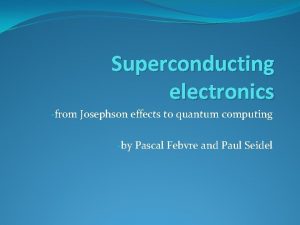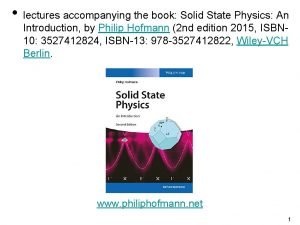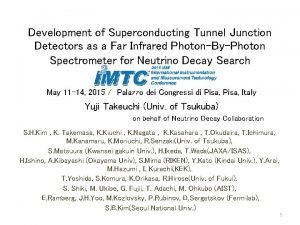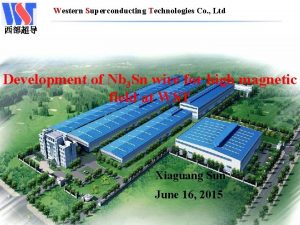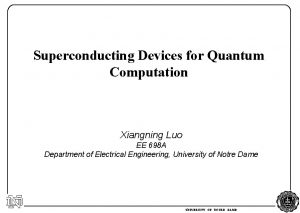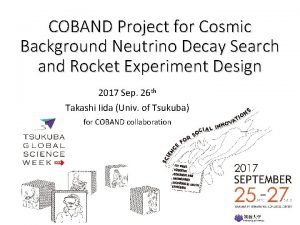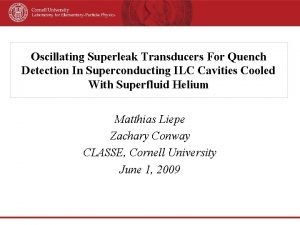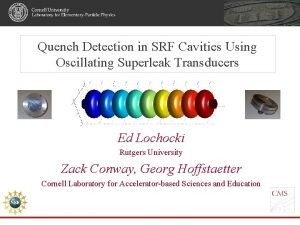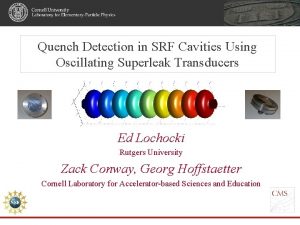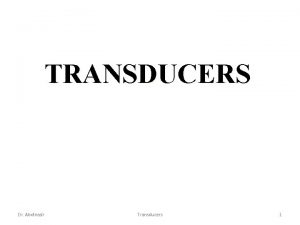Oscillating Superleak Transducers For Quench Detection In Superconducting





- Slides: 5

Oscillating Superleak Transducers For Quench Detection In Superconducting ILC Cavities Cooled With Superfluid Helium Matthias Liepe Zachary Conway CLASSE, Cornell University June 1, 2009

Superconducting Cavity Defects • Localized electromagnetic power losses in a defect cause surface heating of both the defect and the adjacent superconducting surface. • In a sufficiently high electromagnetic field, the superconducting surface adjacent to the defect is heated to the superconducting to normal conducting phase-transition temperature. • Then the superconducting cavity becomes thermally unstable and the normal conducting region grows rapidly until all of the stored electromagnetic energy in the cavity is converted to heat. • i. e. the instability is manifested at a well-defined critical field level by a sudden collapse of the electromagnetic field in the resonator. • The time required for the collapse is typically 10 ms to 1 ms and is referred to as a cavity quench. 6/11/2021 Zachary A. Conway 2

Defect Location • Simple defect localization schemes can be implemented by exploiting the properties of superfluid He, e. g. second sound waves. • When a cavity quenches, typically several joules of thermal energy are transferred to the helium bath in a few microseconds. • If the cavity is operated at T < 2. 17 K, the helium bath is a superfluid and a second sound wave propagates away from the heated region of the cavity. • By locating several transducers in the helium bath around the cavity, the second sound wave front can be observed. The time of arrival of the second sound wave at a given transducer is determined by the time of flight from the heated region, which is centered on the defect causing quench. • Measuring the time of flight to 3 or more uniquely located transducers, unambiguously determines the defect location. 6/11/2021 Zachary A. Conway 3

Superconducting Cavity Defect Example • Defects are anything which cause the cavity to quench below the maximum theoretical critical field. • Pits, bumps, inclusions, surface contamination, sharp-pronounced grain boundaries, etc. 4 mm HAZ 6/11/2021 Zachary A. Conway 4

The Project • You will participate in the development of our second sound quench location system. • The primary goal will be to modify existing software and hardware to handle multiple unique cavity geometries and use the system to help locate defects. • Secondary areas: – Verify the accuracy of the software – Work on the development of the data acquisition hardware – Integrate the data acquisition with the quench location software – Participate in acquiring the cavity quench data 6/11/2021 Zachary A. Conway 5
